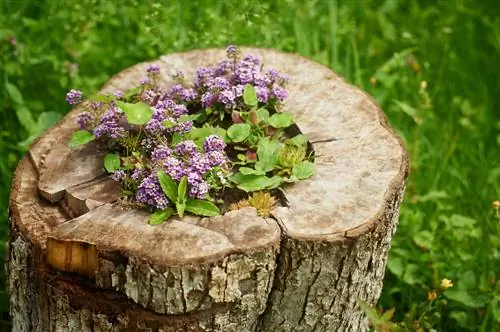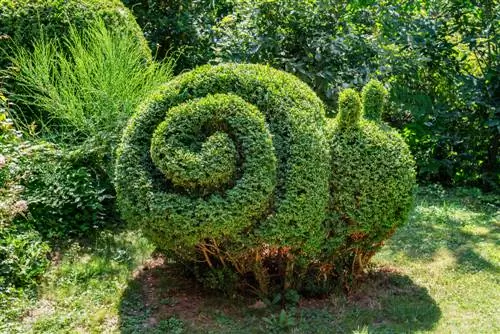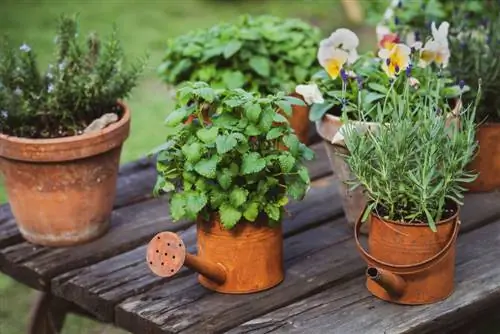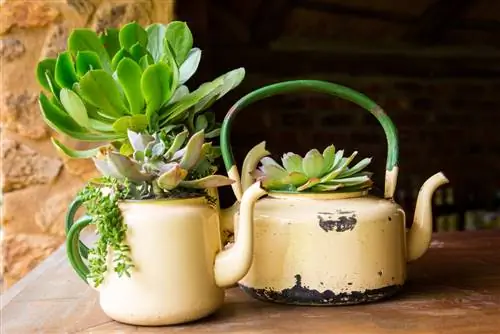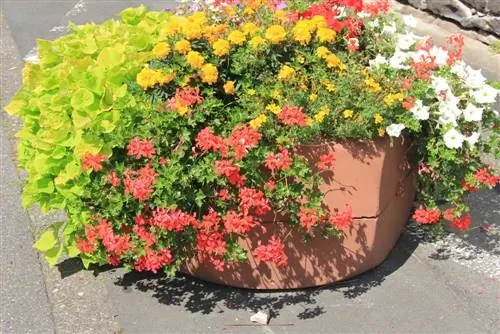- Author admin [email protected].
- Public 2023-12-16 16:46.
- Last modified 2025-01-23 11:19.
In the past, cottage gardens and allotment areas were generally dominated by centrally planted apple trees with a classic standard tree trunk. Today, however, there are hardly any limits to your imagination when it comes to shaping an apple tree.

How to shape an apple tree?
To shape an apple tree, you can cut free-standing trees with a round crown, shape young trees into miniature trees or espaliered fruit and pay attention to an angular distance of 45 degrees when cutting to create optimal harvesting conditions.
When buying, the later development depends on the variety and growth habit
Nowadays, specialist retailers not only have a variety of different early and late fruiting apple varieties available for a he althy harvest in your own garden. The trunk forms of the cultivation and growth height also range from the low bush to the medium-high half-trunk to the classic tall trunk, under which the lawn can be comfortably mowed upright. Young apple trees and home-grown seedlings can also be formed into miniature trees in pots and espaliered fruit if you start shaping the tree early enough.
Important measures when cutting
Ideally, a free-standing apple tree with a naturally shaped crown should be cut roughly round after a certain age. This is the best way to achieve the maxim of a light and air-permeable treetop with good accessibility for the autumn harvest. When pruning in winter, you should make sure to leave branches at an angle of at least 45 degrees from the main branch, as these are optimal for bearing the fruit. During summer pruning, cutting errors from winter can be corrected and the energy and sap-sapping water shoots at the top of the tree crown can be removed. When cutting off larger branches for the rejuvenation cut, you should ensure that the wound is adequately cared for so as not to create unnecessary targets for disease.
Forming a trellis from apple trees
In order to form a visually attractive espalier from young apple trees, the following steps are necessary:
- secure stable stakes in a row in the ground
- In between, pull in tension wires in a horizontal and possibly also vertical direction
- plant the trees with enough distance along the trellis
- Cut the branches of the apple trees into shape and attach them to the holding wires with raffia (€5.00 on Amazon)
A well-cut trellis receives ideal sunlight and ventilation, which means it can produce particularly sweet and juicy apples.
Tips & Tricks
Apple trees grown from cores are often very fast-growing, which is why they are only partially suitable as trees for a trellis or for cutting into smaller shapes.


